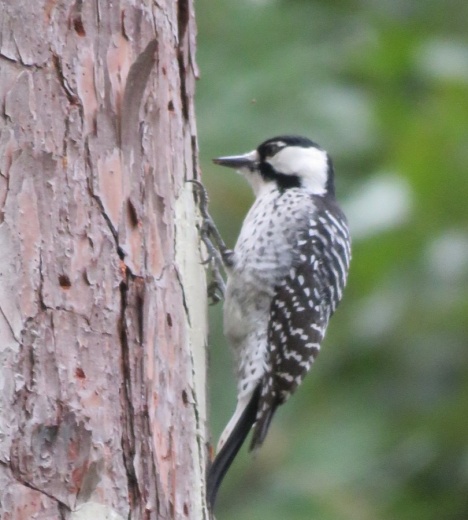A small number of the birds, which nest in cavities in mature living pine trees, reside in W. G. Jones State Forest in Montgomery County off FM 1488.
According to the proposal, the status of the species has improved, and it is not currently in danger of extinction throughout a significant portion of its range. The agency's proposal also includes a rule that "provides measures that are necessary and advisable to provide for the conservation [of the woodpeckers]."
However, the proposal has concerned some who have taken an interest in their conservation.
“It’s very difficult to accept the [woodpeckers] could be downgraded, as I’ve seen the hard work of our foresters and biologists, and it’s a very slow process to achieve any success,” said Ana Cosio, a resident of The Woodlands who has taken an interest in the species' conservation.
In 2017, only nine of the birds were in the forest. In 2018, two pairs were brought to W. G. Jones State Forest from Sam Houston National State Forest. According to USFWS, the species is found in 11 states.
Donna Work, a biologist with Texas A&M Forest Service, which owns and operates W. G. Jones Forest, said some of the activities the forest service employs to help maintain habitat include prescribed burning, mulching, herbicide application, artificial cavity and forest thinning to maintain mature, open pine forests.
The forest is on the list to possibly receive additional pairs of the woodpeckers in the next two years to diversify the local gene pool, she said.
Work said the service also performs a number of activities relating to breeding and newborn woodpeckers.
"Before breeding season, the ... biologist conducts morning roost checks to count numbers of birds in each [red-cockaded woodpecker] group and monitors for suitable cavity and habitat availability," Work said. "During the RCW nesting season, more intensive monitoring for nesting, hatching and fledging success occurs. Banding of the nestlings is conducted. All of these practices are done following [U.S. Fish and Wildlife Service] protocols under proper state and federal permits."
Work said the forest service has committed to continue managing the population of the birds even if the species is reclassified as threatened.
Public comments on the proposal to change the classification must be received or postmarked on or before Dec. 7.
Instructions for submitting comments electronically are: Visit www.regulations.gov; enter the docket number FWS-R4-ES-2019-0018; click "Search"; find the "Search" panel on the left side of the screen under the "Document Type" heading; click the "Proposed Rule" box; and submit a comment by clicking on "Comment Now!"
Comments can be submitted by mail to: Public Comments Processing, Attn: FWS-R4-ES-2019-0018, U.S. Fish and Wildlife Service, MS: JAO/1N, 5275 Leesburg Pike, Falls Church, VA 22041-3803. Requests for public hearings must be received in writing by Nov. 23.





